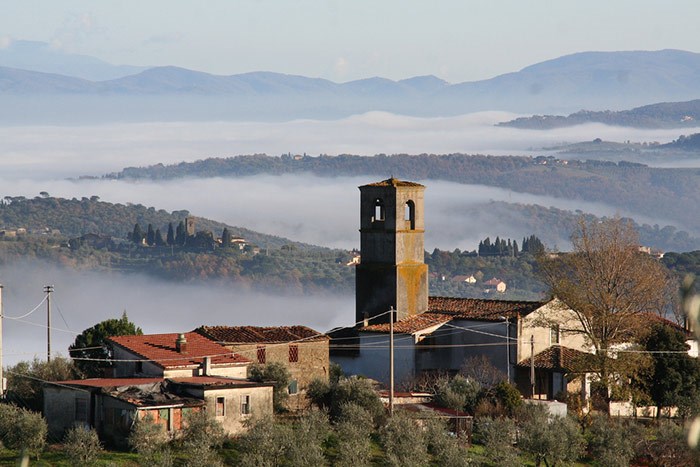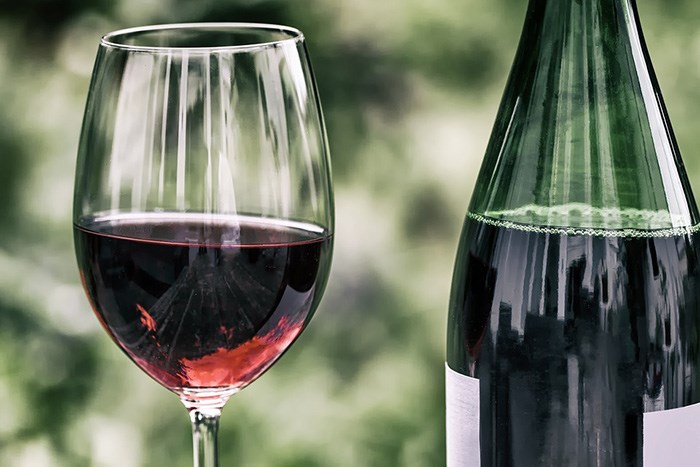 Photo: https://hogsheadwine.wordpress.com
Photo: https://hogsheadwine.wordpress.com
Although winemaking came to the Italian village of Carmignano (pronounced Car-Min-YAN-o) via the Romans, it wasn’t until later that things got royally regal. Given the town’s proximity to Florence (16km to the east), it became the pastoral playground of the ruling Medici family, whose infatuation with the rolling hills persisted through the Renaissance, culminating in a 1716 proclamation by the Grand Duke of Tuscany Cosimo III de’ Medici that designated Carmignano as one of the realm’s top quality wine spots.
The Grand Duke further decreed that the area should become a grape nursery, and the vineyards soon began welcoming clippings from France, most notably from Chateau Lafite in Bordeaux – registering the earliest record of Cabernet Sauvignon being grown in Tuscany. Britain’s Queen Anne loved the town’s robust red wines, importing a steady supply, and the royal courts all over Europe favoured Carmignano over the more proletarian Chianti wines. Things were going way-awesome, what could possibly go wrong?
 Photo: Pixabay
Photo: Pixabay
Turns out, lots. Late 19th century Phylloxera wiped out vineyards and ruined family fortunes, and the two world wars brought danger and uncertainty. The post-war Marshall Plan investment dollars ignored Carmignano, rolling instead into the more mainstream Chianti region, which promised more marketability and return on investment, and began a race-to-the-bottom for Tuscan wines in both price and quality. The formerly prestigious, legendary vineyards of Carmignano were rolled into the bargain-bin Chianti Montalbano appellation, and the veneer of awesomeness faded into the linoleum of banality. History became legend. Legend became myth *cue the movie soundtrack*, would the greatness of Carmignano ever return?
Yep. Winemakers like Ugo Contini Bonacosta, who helped his father rebuild Tenuta Capezzana after the war, started focussing on ultra-high quality, low yield bottlings (while most Montalbano producers were selling wines by weight). They sent for new Lafite clippings to replace the Phylloxera-ravaged crops, and began replanting Cabernet Sauvignon alongside the ubiquitous Sangiovese. They tirelessly lobbied the Italian wine regulators to differentiate Carmignano from pedestrian Chianti, which by the 1970s was enjoying a reputation somewhere between Two-Buck-Chuck and a bag of rocks.
It worked. Not only did Carmignano get its own appellation in 1975, it became the first Italian DOC to legally allow Cabernet Sauvignon in the blend. Modern-day Carmignano wines are wondrous beasts, blending contemporary power and classical elegance, and benefiting from the limey, free-draining soils and the drastic diurnal temperature shifts from the higher altitudes and latitude. Because its reputation is playing catch-up (at least internationally), the wines are still outstanding value compared to other premium Tuscan terroirs like Montalcino or Bolgheri, which brings me back to Capezzana.
 Ugo Contini Bonacosta’s kids and grandkids now run the estate, boasting a 16th century Renaissance villa under which the wines are cave-aged. The Trefiano Riserva is Capezzana’s top wine, 80% Sangiovese, 10% Cabernet Sauvignon and 10% Canaiolo, and it drinks like a hurricane of happiness. Beautiful red fruits stirred with a stick of liquorice and spicy cedar, all braced by an iron-ish frame and balanced acidity that evokes the higher altitudes where it’s grown.
Ugo Contini Bonacosta’s kids and grandkids now run the estate, boasting a 16th century Renaissance villa under which the wines are cave-aged. The Trefiano Riserva is Capezzana’s top wine, 80% Sangiovese, 10% Cabernet Sauvignon and 10% Canaiolo, and it drinks like a hurricane of happiness. Beautiful red fruits stirred with a stick of liquorice and spicy cedar, all braced by an iron-ish frame and balanced acidity that evokes the higher altitudes where it’s grown.
Capezzana Trefiano Carmignano Riserva 2010, 94 points Wine Spectator, $69.99 +tax
Written by Jordan Carrier, Vintage Room Consultant at Everything Wine – River District.


